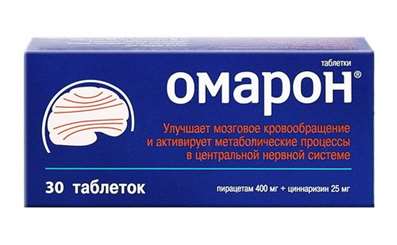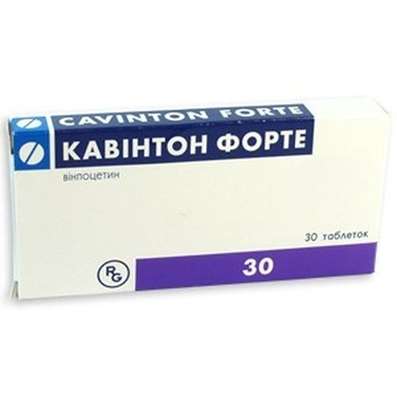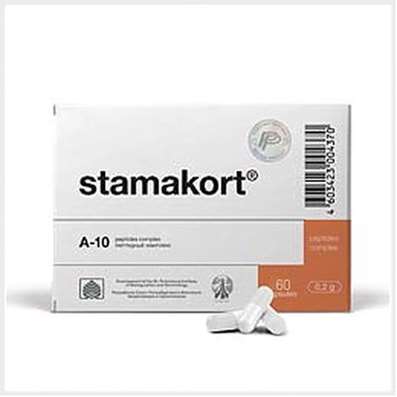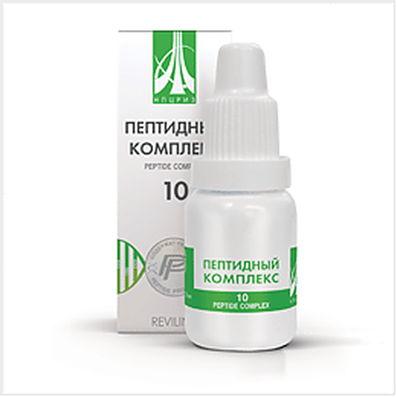Instruction for use: Eprex
I want this, give me price
Dosage form: Solution for intravenous and subcutaneous administration
Active substance: Epoetinum alfa
ATX
B03XA01 Erythropoietin
Pharmacological group:
Stimulators of hemopoiesis
The nosological classification (ICD-10)
D63.0 Anemia in neoplasm: Anemia in chronic diseases; Anemia due to radiation damage; Radiation anemia; Anemia in patients with solid tumors; Pernicious anemia
D63.8 Anemia in other chronic diseases classified elsewhere: Anemia in chronic diseases; Anemia in immunological disorders; Anemia in peptic ulcer; Anemia in kidney diseases; Anemia with HIV treatment; Anemia in the background of chronic renal failure; Anemia in patients with myeloma; Symptomatic anemia; Symptomatic anemia of renal genesis; Anemia in HIV-infected patients; Renal anemia
Z100 * CLASS XXII Surgical practice: Abdominal surgery; adenomectomy; Amputation; Coronary angioplasty; Angioplasty of the carotid arteries; Antiseptic skin treatment for wounds; Antiseptic Hand; Appendectomy; atherectomy; Balloon coronary angioplasty; Vaginal hysterectomy; The coronary bypass; Interventions in the vagina and cervix; Interventions on the bladder; Intervention in the mouth; Restoration and reconstructive surgery; Hand hygiene of medical personnel; Gynecologic surgery; Gynecological intervention; Gynecological surgery; Hypovolemic shock during operations; Disinfection of purulent wounds; Disinfection of wounds edges; Diagnostic intervention; Diagnostic procedures; Cervical Diathermocoagulation; Long-surgery; Replacing the fistula catheters; Infection in orthopedic surgery; Artificial heart valve; cystectomy; Short-term outpatient surgery; Short-term operation; Short surgical procedures; Krikotireotomiya; Blood loss during surgery; Bleeding during surgery and in the postoperative period; Kuldotsentez; laser photocoagulation; laser coagulation; retinal laser coagulation; Laparoscopy; Laparoscopy in Gynecology; CSF fistula; Small gynecological operations; Small surgical procedures; Mastectomy and subsequent plastic; mediastinotomy; Microsurgical operations on the ear; Mukogingivalnye operation; suturing; Minor surgery; neurosurgical operation; Immobilization of the eyeball in ophthalmic surgery; testectomy; pancreatectomy; Perikardektomiya; The period of rehabilitation after surgery; The period of convalescence after surgery; Percutaneous transluminal coronary angioplasty; Pleural thoracentesis; Pneumonia postoperative and posttraumatic; Preparation for surgical procedures; Preparation for surgery; Preparation of the surgeon's hands before surgery; Preparation of the colon for surgical procedures; Postoperative aspiration pneumonia in neurosurgical and thoracic surgery; Postoperative nausea; Postoperative bleeding; postoperative granuloma; postoperative shock; The early postoperative period; myocardial revascularization; Radiectomy; gastric Resection; bowel resection; uterine Resection; liver Resection; enterectomy; Resection of part of the stomach; Reocclusion of the operated vessel; Bonding tissues during surgical procedures; Removal of sutures; Condition after eye surgery; Condition after surgery; Condition after surgery in the nasal cavity; Condition after gastrectomy; Status after resection of the small intestine; Condition after tonsillectomy; Condition after removal of the duodenum; Condition after phlebectomy; Vascular surgery; Splenectomy; Sterilization of surgical instruments; Sterilization of surgical instruments; sternotomy; Dental surgery; Dental intervention in periodontal tissues; strumectomy; Tonsillectomy; Thoracic surgery; Thoracic surgery; total gastrectomy; Transdermal intravascular coronary angioplasty; Transurethral resection; Turbinektomiya; Removal of a tooth; cataract surgery; Removal of cysts; tonsillectomy; Removal of fibroids; Removing the mobile primary teeth; Removing polyps; Removing broken tooth; Removal of the uterus body; Removal of sutures; Fistula likvoroprovodyaschih ways; Frontoetmoidogaymorotomiya; Surgical infection; Surgical treatment of chronic limb ulcers; Surgery; The surgery in the anal area; The surgery on the colon; Surgical practice; The surgical procedure; Surgical interventions; Surgery on the gastrointestinal tract; Surgical procedures on the urinary tract; Surgical procedures on the urinary system; Surgical intervention of the genitourinary system; Surgical procedures on the heart; Surgical manipulation; surgery; Surgery on the veins; Surgical intervention; Vascular surgery; Surgical treatment of thrombosis; Surgery; cholecystectomy; Partial gastric resection; hysterectomy; Percutaneous transluminal coronary angioplasty; Percutaneous transluminal angioplasty; Coronary artery bypass; tooth Extirpation; Extirpation of milk teeth; pulpectomy; pulsative cardiopulmonary bypass; tooth Extraction; teeth Extraction; cataract extraction; Electrocoagulation; endourological intervention; episiotomy; Etmoidotomiya; Complications after tooth extraction
Composition
Solution for intravenous and subcutaneous injection 1 syringe
active substance: Epoetin alfa (recombinant) 8.4 μg (1000 IU); 16.8 μg (2000 IU); 33.6 μg (4000 IU); 84 μg (10000 IU)
Auxiliary substances: polysorbate 80 - 0,15 / 0,15 / 0,12 / 0,3 mg; Sodium chloride - 2.19 / 2.19 / 1.752 / 4.38 mg; Sodium dihydrogen phosphate dihydrate 0.58 / 0.58 / 0.464 / 1.16 mg; Sodium hydrogen phosphate dihydrate - 1.12 / 1.12 / 0.896 / 2.24 mg; Glycine - 2,5 (2,5 / 2/5 mg; Water for injection - up to 0,5 ml / up to 0,5 ml / up to 0,4 ml / up to 1 ml
Solution for intravenous and subcutaneous administration 1 ml
active substance: Epoetin alfa (recombinant) 336 μg (40,000 IU)
Auxiliary substances: polysorbate 80 - 0.3 mg; Sodium chloride - 4.38 mg; Sodium hydrogen phosphate dihydrate 2.23 mg; Sodium dihydrogen phosphate dihydrate 1.16 mg; Glycine - 5 mg; Water for injection - up to 1 ml
Pharmachologic effect
Mode of action - Erythropoietic.
Dosing and Administration
IV, SC.
Before use, carefully inspect the solution for visible particles or discoloration. The drug should not be shaken, tk. This can lead to denaturation of glycoprotein and loss of drug activity. Eprex® contains no preservatives, therefore the individual packaging is designed for single use.
IV introduction. The duration of the injection is at least 1-5 minutes. A slower administration is preferable for patients who have an influenza-like syndrome for drug administration. Patients who are on hemodialysis, the drug is injected through the needle into the fistula after the dialysis procedure is completed. To wash the connecting tubes, and to ensure a satisfactory introduction of the preparation into the circulation system, after injection of the preparation Eprex®, 10 ml of isotonic sodium chloride solution are introduced (only for the IV solution and for administration of 1000, 2000, 4000 and 10,000 IU).
Do not administer the drug in the form of an IV infusion or mix it with other drugs.
SC injection. The maximum volume of one injection is not more than 1 ml, if you need large volumes, several injection points should be used. The drug is injected under the skin of the shoulder, thigh, anterior abdominal wall.
When the mode of administration is changed, the drug is administered in the previous dose, then the dose is adjusted if necessary (to achieve the same therapeutic effect with subcutaneous administration, a dose of 20-30% is required less than for IV administration) (for IV solution and SC the introduction of 1000, 2000, 4000 and 10,000 IU).
Patients suffering from oncological diseases - SC.
The optimal hemoglobin content should be 100-120 g / l in men and women and should not be exceeded.
The initial dose for the prevention or treatment of anemia should be 150 IU / kg body weight 3 times a week SC. As an alternative, the initial dose can be 40,000 IU once a week, c / o.
If, after 4 weeks of treatment, the hemoglobin content increased and is not less than 10 g / l, or the number of reticulocytes increased by more than 40,000 cells / μl higher than the original, the dose of Eprex® remains the same.
If, after 4 weeks of treatment, an increase in hemoglobin is less than 10 g / L and an increase in the number of reticulocytes is less than 40,000 cells / μl compared to the initial, then for the next 4 weeks the dose is increased to 300 IU / kg body weight 3 times a week or 60,000 IU once a week.
If after an additional 4 weeks of treatment with a dose of Eprex® 300 IU / kg 3 times a week or 60,000 IU once a week, the hemoglobin content increased and is not less than 10 g / l or the amount of reticulocytes increased by more than 40,000 cells / μl, then Preserve the existing dose of Eprex®.
If after 4 weeks of treatment at a dose of 300 IU / kg body weight or 60,000 IU once a week the hemoglobin content rises by less than 10 g / l and the increase in the number of reticulocytes is less than 40,000 cells / μl compared to the original, treatment should be discontinued.
If the hemoglobin content is increased by more than 20 g / l for 1 month or the hemoglobin content reaches 120 g / l, the dose of the drug should be reduced by 25%. If the hemoglobin content exceeds 120 g / l, it is necessary to suspend the treatment until it falls below 120 g / L and then continue the injection of Eprex® in a dose 25% below the original dose.
Therapy with Eprex® should be continued for 1 month after the end of chemotherapy.
Adult patients participating in the program of collecting autologous blood before surgical interventions - IV.
Epoetin alfa should be administered at the end of the blood collection procedure.
Before prescribing Eprex®, all contraindications to collection of autologous blood should be taken into account. At each visit to the doctor, a patient receives a blood sample (if the hematocrit level is 33-39% and / or the hemoglobin level is 100-130 g / l) and stored for autologous transfusion. The recommended dose of Eprex® is 600 IU / kg iv twice a week for 3 weeks before surgery.
The serum ferritin level (or serum iron level) should be determined in all patients before and during treatment with Eprex®. If necessary, an additional iron intake is prescribed.
In the presence of anemia, its cause should be established before starting therapy with Eprex®.
Patients in the pre- and postoperative period, not participating in the program of collecting autologous blood, are SC.
It is recommended to use the drug at a dose of 600 IU / kg per week for 3 weeks preceding surgery (21, 14 and 7 days before surgery) and on the day of surgery. If necessary, when the preoperative period should be reduced for medical reasons, Eprex® can be given daily at a dose of 300 IU / kg for 10 days before surgery, on the day of surgery and for 4 days after surgery.
When hemoglobin content is less than 130 g / l, it is recommended to prescribe Eprex® in a dosage of 300 IU / kg per day. If the hemoglobin content reaches 150 g / l and above, epoetin should be discontinued.
Solution for IV and SC administration, 1000, 2000, 4000 and 10,000 IU (optional)
Patients with chronic renal failure, - IV, SC.
IV the administration of the drug is preferable for patients on hemodialysis. Patients with chronic renal failure who are not receiving dialysis or who are on peritoneal dialysis, the drug can be administered sc.
The optimal level of hemoglobin for adult patients is 100-120 g / l, for children - 95-110 g / l.
In patients with concomitant clinically significant coronary artery disease or chronic heart failure, the hemoglobin level maintained should not exceed the upper limit of the optimal value.
The dose of the drug is 50 IU / kg. During the selection process, the dose of Eprex® is increased if the hemoglobin level rises by less than 10 g / L / month.
Adult patients on hemodialysis – IV.
Treatment is divided into 2 phases - the phase of anemia correction and the supporting phase.
Phase correction of anemia: Eprex® is administered at a rate of 50 IU / kg 3 times a week. If necessary, the dose can be increased (not more often than once per 4 weeks) by 25 IU / kg 3 times a week until the optimal level of hemoglobin is achieved.
Supporting phase: The usual dose for maintaining the optimal level of hemoglobin is 30-100 IU / kg 3 times a week. Available data suggest that patients with severe anemia (hemoglobin content - less than 60 g / l) require a larger maintenance dose.
Adult patients who are on peritoneal dialysis – IV, SC.
Phase correction of anemia: the drug is administered at a rate of 50 IU / kg 2 times a week. If necessary, the dose can be gradually increased (not more often than once per 4 weeks) by 25 IU / kg 2 times a week until the optimal level of hemoglobin is reached.
Supporting phase: the usual dose to maintain the optimal level of hemoglobin is 25-50 IU / kg 2 times a week.
Adult patients with chronic renal failure who do not receive dialysis - in / in, p / to.
Phase correction of anemia: Eprex® is administered at a rate of 50 IU / kg 3 times a week. If necessary, the dose can be increased (not more often than once per 4 weeks) by 25 IU / kg 3 times a week until the optimal level of hemoglobin is achieved.
Supporting phase: the usual dose for maintaining the optimal level of hemoglobin is 17-33 IU / kg 3 times a week.
Children who are on hemodialysis, regardless of age - in / in.
Phase correction of anemia: Eprex® is administered at a rate of 50 IU / kg 3 times a week. If necessary, the dose can be increased (not more often than once per 4 weeks) by 25 IU / kg 3 times a week until the optimal level of hemoglobin is achieved.
Support phase: Usually children with body weight up to 30 kg require a larger maintenance dose than adults and children weighing more than 30 kg. In clinical trials after 6-month therapy with Eprex®, the following maintenance doses of epoetin alfa were established:
| Body weight, kg | Dose of the drug, IU / kg 3 times a week | |
| Normal support | Median | |
| <10 | 75–150 | 100 |
| 10–30 | 60–150 | 75 |
| >30 | 30–100 | 33 |
The available data suggest that patients with severe anemia (hemoglobin level <68 g / l) require a larger maintenance dose than patients with less severe anemia.
HIV-infected patients receiving zidovudine therapy – IV, SC.
It is recommended to determine the initial level of endogenous erythropoietin in the serum before starting treatment with Eprex®. The conducted studies show that at an erythropoietin level of more than 500 IU / ml, the effect of therapy with Eprex® is unlikely.
Phase correction of anemia: the drug is prescribed in a dose of 100 IU / kg 3 times a week for 8 weeks. If after 8 weeks of therapy failed to achieve a satisfactory effect (for example, reduce the need for blood transfusions or achieve an increase in hemoglobin), the dose can gradually increase (not more often than once per 4 weeks) by 50-100 IU / kg 3 times a week. If the satisfactory effect of therapy with the drug Eprex® at a dose of 300 IU / kg is not achieved 3 times a week, then the response to further therapy at higher doses is unlikely.
Supporting phase: after achieving a satisfactory effect in the anemia correction phase, the maintenance dose should provide a hematocrit level within 30-35%, depending on the dose change of zidovudine, the presence of concomitant infectious or inflammatory diseases. With a hematocrit of more than 40%, Eprex® should be discontinued before hematocrit is reduced to 36%. When resuming therapy, the dose of epoetin alfa should be reduced by 25%, with subsequent adjustment to maintain the required level of hematocrit.
The content of hemoglobin in HIV-infected patients receiving zidovudine should not exceed 120 g / l.
The serum ferritin level (or serum iron level) should be determined in all patients before and during treatment with Eprex®. If necessary, an additional iron intake is prescribed.
Release form
Solution for intravenous and subcutaneous administration, 1000 IU. For 0.5 ml in a borosilicate glass syringe (type I) without or with PROTECS ™ needle guard to prevent needle injury after use. There are 3 pre-filled syringes in a PVC contour pack. 2 contour squares in a cardboard bundle.
Solution for intravenous and subcutaneous injection, 2000 IU. For 0.5 ml in a borosilicate glass syringe (type I) without or with PROTECS ™ needle guard to prevent needle injury after use. There are 3 pre-filled syringes in a PVC contour pack. 2 contour squares in a cardboard bundle.
Solution for intravenous and subcutaneous administration, 4000 IU. For 0.4 ml in a borosilicate glass syringe (type I) without or with a PROTECS ™ needle guard to prevent needle injury after use. There are 3 pre-filled syringes in a PVC contour pack. 2 contour squares in a cardboard bundle.
Solution for intravenous and subcutaneous administration, 10,000 IU. 1 ml in a borosilicate glass syringe (type I) without or with the PROTECS ™ needle guard to prevent needle injury after use. There are 3 pre-filled syringes in a PVC contour pack. 2 contour squares in a cardboard bundle.
Solution for intravenous and subcutaneous injection, 20000 IU. For 0.5 ml in a borosilicate glass syringe (type I) with PROTECS ™ needle guard to prevent needle injury after use. For 1, 2 or 3 pre-filled syringes in a PVC loop contour pack. 1 contour pack containing 1 syringe or 2 contour packs containing 2 or 3 syringes in a carton.
Solution for intravenous and subcutaneous administration, 40,000 IU. 1 ml in a borosilicate glass syringe (type I) with PROTECS ™ needle guard to prevent needle injury after use. For 1, 2 or 3 pre-filled syringes in a PVC loop contour pack. 1 contour pack containing 1 syringe or 2 contour packs containing 2 or 3 syringes in a carton.
Manufacturer
Solution for IV and SC administration, 1000, 2000, 4000 and 10,000 IU.
Production of the finished dosage form and primary packaging: Veter Pharma Fertigung GmbH & Co. KG, Germany, Ravensburg, Holbeinstrasse 40, 88212
Or Silag AG, Switzerland, Schaffhausen, Hochstrasse 201, CH-8205.
Issuing control and secondary packaging: Silag AG, Switzerland, Schaffhausen, Hochstrasse 201, CH-8205.
The owner of the registration certificate: Johnson & Johnson LLC, Russia.
121614, Moscow
Solution for IV and SC administration, 20,000 and 40,000 IU.
Production, packaging and quality control: Silag AG, Switzerland, Schaffhausen, Hochstrasse, 201, CH-8205.
The holder of the registration certificate, the organization accepting the claims: Johnson & Johnson LLC, Russia.
121614, Moscow
Conditions of supply of pharmacies
On prescription.
Storage conditions of the drug Eprex
In the dark place at a temperature of 2-8 ° C (do not freeze, do not shake).
Keep out of the reach of children.
Shelf life of the drug Eprex
1,5 years.
Do not use after the expiry date printed on the package.

 Cart
Cart





